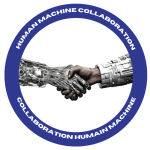
How scaling too fast without structured processes can quietly sabotage your business growth
Introduction
You’re growing. Orders are up, new clients are coming in, and you’re hiring fast to keep up. From the outside, it looks like success. But inside the business, it feels more like a fire drill.
Teams are stretched. Processes are unclear. New hires are thrown into the deep end without proper onboarding. Your leaders are constantly troubleshooting. And despite everyone’s best efforts, performance starts to slip.
This isn’t unusual. In fact, it’s one of the most common growing pains in manufacturing companies between $10M and $20M in annual revenue. And while it’s tempting to keep pushing forward, ignoring these cracks can cost far more than you think.
What Growth Without Systems Really Looks Like
When a business starts scaling faster than its operations can support, here’s what we often see:
Employees make up their own way of doing things
In the absence of a clear path, people will develop one. Since no standard exists—or the existing ones are out of date—people will simply act to get the work done. The reality is that at that stage of growth, most people are in execution mode: get the work done, get the order out the door, answer the client ASAP. But few take the time to slow down and think. When everyone is in this mode of execution, there is less communication between people and processes tend to become scattered and dependent on the one person, making it almost impossible to leverage and to optimize it.
New hires get inconsistent onboarding
At this stage, organizations tend to hire when the need is present. The hard truth is that when we onboard new people, everyone’s productivity lowers. The person who is training has less time to do their work. The person who just arrived needs time to understand the new work. So organizations rely on whoever has time to explain the basics. And even that becomes tangled, as the person training in working on a variety of other things at the same time so training is weak and difficult for the new person.
Leaders are stuck in reactive mode
With the growing demand from customers and employees, leaders are constantly fixing issues instead of planning for what’s to come. Moreover, leaders at this stage tend to think that all the problems need to be solved by them. Thus, they become more concerned about fixing what is not working quickly. This make them great “firefighters” but it doesn’t help the organization in the long run.
Customer complaints increase
Even though you’re working harder than ever, the increased demand is adding more pressure on everyone. With less reliable processes, customer start to see a greater variety in their products or services, thus leading to more complaints.
Turnover creeps up
In such an environment, high-performers get burned out or disillusioned. They disengage from work. According to Gallup’s State of the Global Workplace: 2025 Report, Canada and the United States are showing 69% of the workforce who is not engaged or actively disengaged. Furthermore, the same report indicates that 50% of surveyed people are watching for or actively seeking new job. What about the new people hired? 44 days! That’s how long you have to make a great first impression. 70% of new employees know within the first month if it’s a good fit for them or not.
The scary part? Most of these symptoms are normalized. People just assume it’s “what happens when we grow.” But it doesn’t have to be.
The Cost You Don’t See on the P&L
While some consequences are visible—rework, overtime, delays—others are less obvious but more dangerous.
Tribal knowledge becomes a liability
When your business depends on a handful of people who “just know how things work,” you’re exposed. If they leave, you lose critical know-how overnight. And if they stay but don’t know how to accurately perform the work, your customers will continue to call with complaints.
Leaders become bottlenecks
In high-growth environments, leaders often get pulled into solving every problem. Instead of enabling the team, they unintentionally slow everything down.
Culture suffers
When systems break down, people point fingers, protect turf, and disengage. You lose the opportunity to build a learning culture—one where problems are solved together, not in silos.
Why You Need Structure Before Speed
It’s a paradox: the faster you’re growing, the more you need to slow down—just long enough to build a solid foundation.
Structure doesn’t mean bureaucracy. It means clarity. It means that every new employee understands how to do their job, that your KPIs reflect reality, and that people have the tools and routines to solve problems without waiting for permission.
A few examples:
- A standard onboarding process for every new hire that contains the essential information on your organization: mission, vision, values and policies are common for all new hires. Then, add-in the role specific information and training.
- Visual work instructions at key stations to easily understand the objective of the day, the progress, and who does what and when. It’s a great way to train new hires wile doing the work.
- Daily 10-minute team huddles that highlight wins and blockers.
- A simple suggestion system that employees actually use and that leadership responds to. If leaders don’t pay attention to it, then it’s useless. This becomes powerful when employees can voice ideas for improvement, for new products, new services, etc. and that there is a defined process to select the ideas and provide feedback to the employees.
None of this is complicated. But without intentional effort, it simply doesn’t happen.
What It Looks Like When You Get It Right
One of our clients—a privately held manufacturer—was planning for an ambitious growth (+50% of revenue) and had set out to create a sales team of hunters. The shop floor was having a difficult time keeping up with the added demand, quality issues were up, rework was increasing and leaders were being pulled in every direction.
We helped the Operations team pause and do four things:
- Understand their role within the corporate strategy and create their own mission statement to focus their efforts,
- Create Key Performance Indicators (KPI) to keep track of their responsibilities to delivery the strategy,
- Engage employees in identifying risks in their operations as well as initiatives to reduce the gaps between goals and results, and
- Set up a regular review meetings focused on actions, not just updates
In less than one year, they:
- Improved their Sales On Time Delivery by 27% and their Production On Time Completion by 20%,
- Created a team that understands their role and how they impact their colleagues,
- Have a series of continuous improvement initiatives to work on to continue to improve their processes and results, and
- Got their senior leader out of firefighting and back into coaching and planning for the future
And most importantly, employees started to believe they were part of the solution.
You Don’t Have to Guess Where You Stand
When you’re in the middle of chaos, it’s hard to know what’s normal and what’s not. You might wonder:
-
Are we ahead of the curve, or falling behind?
-
Are these problems growing pains—or signs of deeper issues?
-
Is it just one department, or is it systemic?
That’s where our Operational Maturity Assessment comes in.
We’ve developed a practical tool to help manufacturing leaders like you quickly evaluate where your operations stand today—and where to focus next.
The Teaser Version:
A quick, 3-minute self-assessment you can use in a team meeting or leadership retreat. Great for getting the conversation started.

The Full Business Version:
A more in-depth, structured assessment that captures insights across multiple departments and leadership levels. It reveals patterns you might be missing and provides a clear roadmap for action.
And here’s the key: when you invite different voices into the process—not just management—you get a clearer picture of what’s really going on. Often, the answers are already inside your organization. This tool helps you surface them.
Final Thoughts
Growth is exciting—but it’s also risky if your processes can’t keep up. Before hiring more people or investing in another ERP module, take a moment to assess your foundation.
You might find that the fastest path forward is actually a step back—to build clarity, capability, and alignment that can carry your business to the next level.
Ready to see where your operations stand?
Try our free teaser version or request the full business maturity assessment tailored to your team.
Access the Teaser Operational Maturity Assessment Now
About Veronica B. Marquez, M.Sc., CSSBB

I help growing manufacturing and service organizations scale without chaos—by turning operational challenges into sustainable performance gains. My superpower is making strategy real at every level of the business: connecting people, processes, and purpose to drive productivity, engagement, and resilience. I bring clarity to complexity and help teams execute better, faster, together. Through a proven lens of operational excellence, continuous improvement, and supply chain optimization, I work with leaders to align efforts, simplify execution, and create systems that actually support growth.
Named one of the Top 50 Experts in Operational Excellence by the PEX Network, I bring over 20 years of experience across sectors like manufacturing, distribution, mining, and public services. I teach Lean Six Sigma at the executive education level, lecture on service design in a master’s program, and host a LinkedIn Live series focused on Excellence in Industry 5.0. Ready to explore how operational excellence can transform your business? Reach out https://www.linkedin.com/in/veronicabm/.
📸 Canva








